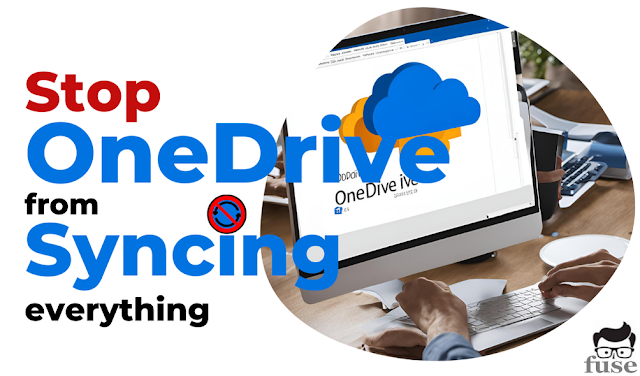
In this blog post, we'll walk you through the steps to prevent OneDrive from copying everything onto your PC and help you manage your storage more effectively.
Why Is OneDrive Taking Up So Much Space?
OneDrive automatically syncs your files between the cloud and your PC, ensuring you have access to them even when offline. However, by default, OneDrive might sync all your files to your PC, creating local copies that take up disk space. This can be problematic if your PC has limited storage capacity.
Fortunately, there are ways to stop OneDrive from downloading everything to your PC and keep your files stored only in the cloud.
Step 1: Enable Files On-Demand
OneDrive’s Files On-Demand feature allows you to view and access all your files in OneDrive without downloading them to your PC. This can save a significant amount of disk space.
How to Enable Files On-Demand:
1. Open OneDrive Settings: Right-click on the OneDrive icon in the system tray at the bottom-right corner of your screen and select Settings.
2. Enable Files On-Demand: In the Settings tab, check the box next to Save space and download files as you use them.
3. Apply and Close: Click OK to apply the changes.
With Files On-Demand enabled, your files will remain in the cloud, and only the ones you open will be downloaded to your PC temporarily.
Step 2: Free Up Space by Making Files Cloud-Only
After enabling Files On-Demand, you can manually select which files or folders to keep only in the cloud, freeing up additional space on your PC.
How to Make Files Cloud-Only:
1.Open OneDrive Folder: Open your OneDrive folder in File Explorer.
2.Select Files to Free Up Space:Right-click on the files or folders you want to keep in the cloud.
3.Free Up Space:Choose Free up space from the context menu. This will remove the local copy from your PC while keeping it available in OneDrive.
Step 3: Unlink OneDrive from Your PC
If you want to stop syncing altogether, you can unlink OneDrive from your PC. This will remove the synced files from your hard drive but won’t affect the files stored in the cloud.
How to Unlink OneDrive:
1.Access OneDrive Settings:Right-click the OneDrive icon in the system tray and go to Settings.
2.Unlink This PC: In the Account tab, click Unlink this PC.
3.Remove Local Files: Once unlinked, you can manually delete the local OneDrive folder to free up space on your PC.
Step 4: Reset OneDrive (If Needed)
If you’re having trouble adjusting the settings or if the folders you want to unsync are greyed out, resetting OneDrive might help.
How to Reset OneDrive:
1. Run the Reset Command: Press 'Windows + R' to open the Run dialog box. Type %localappdata%\Microsoft\OneDrive\onedrive.exe /reset and press Enter.
2.Restart OneDrive: After resetting, OneDrive will restart. You can then set it up again and choose the folders to sync.
Step 5: Manage PC Folder Backup Settings
Sometimes, your Documents, Pictures, and Desktop folders are automatically set to sync with OneDrive. You can adjust these settings to prevent unnecessary syncing.
How to Manage Folder Backup:
1. Open OneDrive Settings: Right-click on the OneDrive icon and select Settings.
2. Manage Backup: In the Backup tab, click Manage backup.
3. Adjust Sync Settings: Stop backing up any folders that you don’t need to sync with OneDrive.
Conclusion
By following these steps, you can stop OneDrive from copying all your files to your PC, freeing up valuable disk space. Whether you choose to enable Files On-Demand, make files cloud-only, or completely unlink OneDrive from your PC, you’ll have more control over how your files are stored and accessed.
If you continue to experience issues, resetting OneDrive or reinstalling it might be necessary. Remember, these settings won’t delete your files in the cloud, so you can always access them when needed.
For more tips on managing storage and optimizing your PC's performance, be sure to check out our other blog posts.


0 Comments
Please do not spam